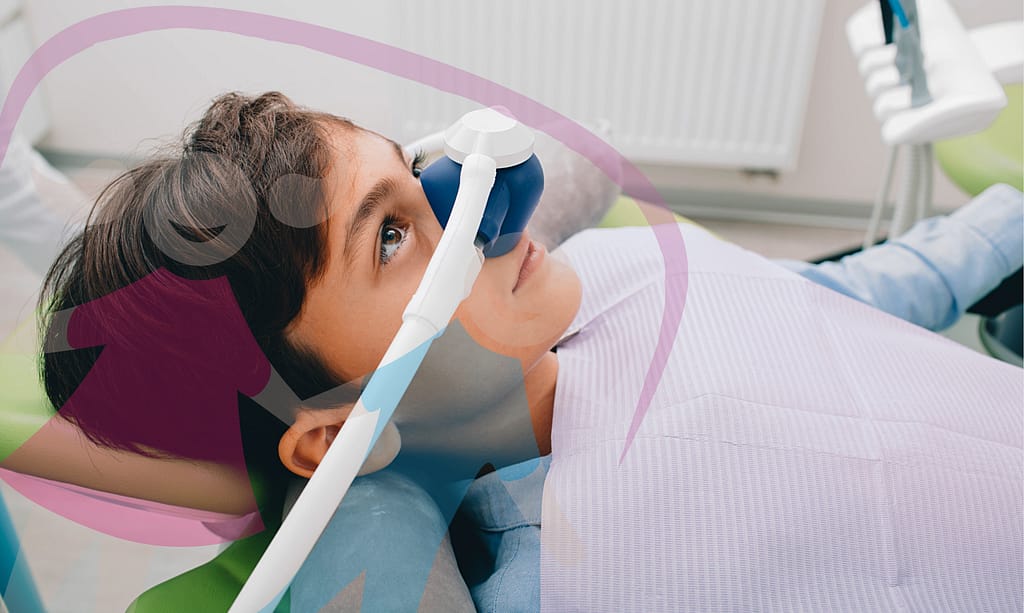4 Ways Sedation Dentistry Creates Calmer Experiences for Anxious Kids

A Soothing Solution for Dental Anxiety
We understand that for some kids, a trip to the dentist can feel like a daunting expedition. Those bright lights, the unfamiliar equipment, and the strange sounds can make their hearts race and palms sweat. But what if we told you there’s a way to transform this experience into a peaceful journey?
Say hello to sedation dentistry, your child’s new superhero in the dental chair! It’s an innovative approach that can turn potentially stressful dental visits into calm and comfortable experiences. Whether it’s a routine check-up or a more involved treatment, sedation dentistry has your little ones covered.
Stick with us as we explore four ways pediatric sedation dentistry can flip the script on your child’s dental anxiety!
1. Sedation Dentistry Enhances Communication and Cooperation
Sedation dentistry plays a crucial role in fostering better communication and cooperation between kids and their dental care team. We are all aware that anxiety can be a big roadblock in any communication process. Now, imagine a child trying to articulate their fears or concerns in an already anxiety-inducing environment. Not an easy task, right?
This is where sedation steps in as a game-changer. By relieving excessive anxiety, sedation paves the way for better emotional regulation in kids. With their anxiety in check, children find it easier to express their feelings, concerns, or questions to the dental care team. This open communication is vital to the dentist as well, as it allows them to adjust their approach according to the child’s comfort level, leading to a more cooperative and successful dental visit.
Remember, sedation is not about avoiding dental fears but about making the communication process smoother, leading to a positive and cooperative dental experience.
2. Minimizes Stress Triggers
A dental office, even when it’s designed with a child-friendly theme, can be an overly stimulating environment for children. The unfamiliar surroundings, the sound of the dental drill, and the sight of unfamiliar dental instruments can be overwhelming. The sensory overload, coupled with the anticipation of discomfort, can exacerbate dental anxiety in children.
Sedation dentistry comes as a savior in these situations. It not only eases the child’s mind but also creates a relaxed, stress-free environment that can help mitigate these anxiety triggers. Children are able to experience dental care visits in a calmer state of mind. This tranquility lessens the impact of the sights, sounds, and sensations that could be potential stress triggers.
Consequently, the child is less likely to associate the dental office with overwhelming anxiety, leading to more positive experiences and perceptions of dental visits in the future. We’ll expand more on this next.
3. Creates Positive Early Experiences
Understanding the importance of positive early experiences in shaping a child’s perception of dental care can’t be overstated. Sedation dentistry plays a crucial role in this context, as it ensures the child’s early interactions with dentistry are calm and free of anxiety. By mitigating the fear and discomfort often associated with dental treatments, sedation dentistry allows children to associate dental visits with feelings of relaxation and ease rather than fear and anxiety.
This positive association continues to pay dividends as the child grows. Children who have positive dental experiences are more likely to maintain regular dental check-ups as they age, reducing the risk of serious dental issues in the future.
Additionally, these early positive experiences can also alleviate the cycle of dental anxiety, where fear of the dentist leads to skipped appointments and, subsequently, more severe dental issues that require more extensive procedures, thus increasing anxiety further.
4. Maximizes Safety for Everyone
Sedation dentistry presents different levels of sedation, each suited to varying needs and procedures. Two common types are nitrous oxide (commonly known as “laughing gas”) and general anesthesia.
Nitrous oxide is a mild form of sedation that helps to relax nervous children. It’s administered through a small mask fitted over the child’s nose, allowing them to breathe in the gas. It doesn’t put the child to sleep, but it does help children relax quite a bit. The effects of nitrous oxide wear off quickly after the mask is removed, making it a safe option for minor procedures.
On the other hand, general anesthesia induces a deeper level of sedation. It’s typically administered intravenously or through inhalation, placing the child in a sleep-like state. During this time, they are completely unaware of their surroundings, and they won’t feel any pain. This level of sedation is usually reserved for more complex procedures or cases where the child’s dental anxiety is severe.
For some children, particularly those with debilitating dental anxiety or special medical needs, general anesthesia can be the most beneficial. It ensures everyone’s safety—both the child and the dental care team—by allowing the procedure to be completed smoothly without any risk of sudden movements or reactions from the child.
Gentle and Effective Pediatric Dental Care in Omaha
Sedation dentistry plays a valuable role in ensuring that every child’s dental experience is both comfortable and safe. It offers a solution for those struggling with dental anxiety, fostering a positive attitude toward dental care from an early age.
At Pediatric Dental Specialists of Omaha, we are committed to providing the gentlest and most effective pediatric dental care, including options for sedation. We strongly believe that understanding and compassion can transform a child’s dental visit from a frightening obligation into an experience they can confidently approach. Don’t let your child’s dental anxiety stand in the way of their oral health. Reach out to us today to learn more about how sedation dentistry can make dental visits more comfortable and less stressful. Let’s work together to give your child the healthiest smile possible.